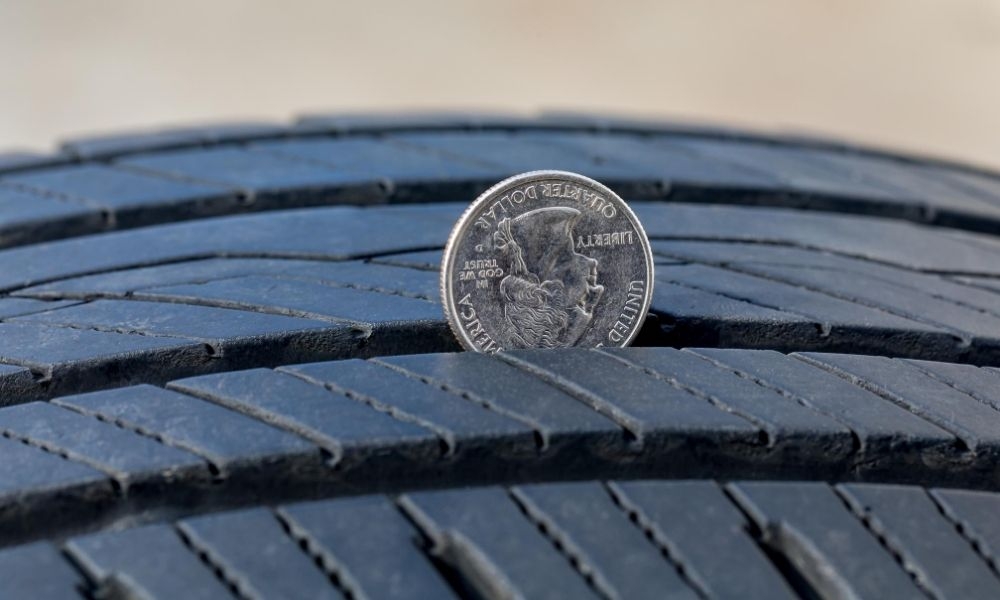
Your tires are critical to the safe operation of your vehicle. We share a few pointers on how to do a tire safety inspection, so you’ll know when to service or replace your tires or wheels.
Check for Tread Depth and Uneven Wear
A penny is worth more than one cent when it comes to doing a tire safety inspection. To check to see if your tires have sufficient tread depth, hold a penny between your thumb and forefinger, with Lincoln’s head upside down and facing you. Put the penny into one of the tread grooves. If Honest Abe’s head fully or partly disappears into the tread, you’ve got enough tread to drive on. If you can still see the top of Abe’s head, your tires are done. Repeat the test on all four tires, especially if you recall replacing two rather than four tires last time you bought new tires.
Check the tread in several spots around each tire using the penny. If the wear is uneven, you may need a wheel alignment or a tire rotation.
Check for Cracks, Bulges, and Foreign Objects
It’s normal for the rubber in your tires to crack a little as the tire wears. However, you should never be able to see the belts or fabric within the tire. If your tires are cracked so badly you can see their insides on the outside, they are not safe to drive.
Bulges in the tires may indicate damage to the sidewalls, and this can lead to tire failure. A bulge indicates separation within the tire, where air has gotten between the layers of rubber. This is also an unsafe condition. Tears and cuts in the sidewalls weaken the tire as well.
A tire safety inspection should look for sidewall damage that may have been caused by an impact with an object or a parking mishap where the tire hits the curb hard. If you have this kind of damage, you should also look carefully at your wheels – an impact with a curb, bump, pothole, or debris can cause a dent in your tire rim (where the tire is mounted on the wheel). Damage to a rim can cause further damage to a tire.
Additionally, park with the wheels turned so you can see the entire surface of the tire, except the part in contact with the ground. Check for pebble, nails, and other debris stuck in the tire. You could be driving with a nail in your tire for a while without realizing it, as the puncture is partly plugged with the nail, so the tire leaks slowly. But even if the tire isn’t leaking much, a puncture requires immediate repair or replacement. You may have to pull the car out into the driveway to get a good look at the entire circumference of the tire.
Check and Adjust Tire Pressure
Over or underinflated tires cause undue wear. Look for the recommended pressure on the inside door sticker and use a pressure gauge to determine if your tires are within the proper range. Adjust tire pressure accordingly by inflating or deflating the tire until you get the correct reading.
Check Wheel Size
If you purchased a used 2013 Hyundai Sonata or another older, used car, you might be driving on the wrong wheels. Make sure your wheels and tires are the specified sizes for the make and model of your car. The Wheelership can provide OEM replacement rims for many older cars if you need new wheels due to damage or sizing problems.


